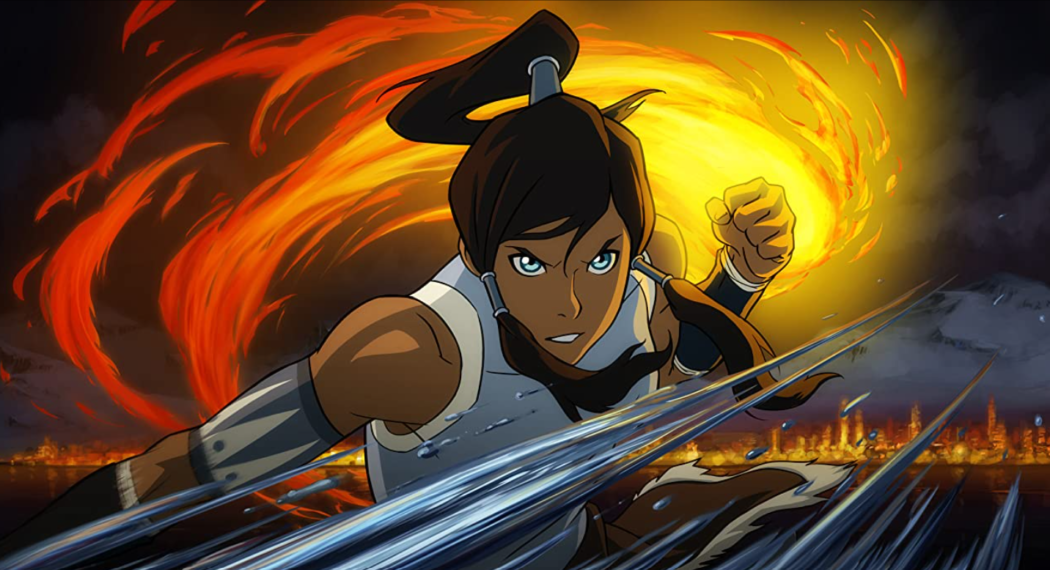‘The Legend of Korra’ isn’t as bad as fans think
I finally got persuaded into watching “Avatar: The Last Airbender” last semester and fell in love. After I finished, it left a hole I filled with “The Legend of Korra.” I knew ahead of time this spinoff series was a controversial topic among fans, so I went into it not expecting much. I have to admit, I was pleasantly surprised. I enjoyed it more than I was led to believe. Everyone is welcome to their own opinions, but I think the fanbase is too harsh with their criticism of it.
Please be warned, there are spoilers ahead.
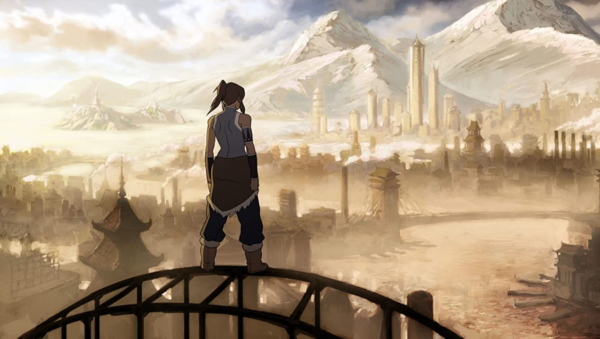
First of all, the show does not follow stratified gender norms and I love it. Most animated shows made for a younger audience enforce patriarchal stereotypes, but Korra is a cocky, impulsive athlete — characteristics normally given to males. One of their lead male characters, Bolin, is emotional and dramatic — characteristics normally given to females. The tech-savvy, business-owning Asami is strong and beautiful, rather than a socially awkward, undesirable nerd. Arguably, the strongest airbender, Jinora, is a young girl. The chief of police, Lin: a woman.
Of course, there are characters such as Makko and Pema who represent gender stereotypes, but there is enough dissent to be praiseworthy in this kind of show.
Similarly, while I was not one hundred percent satisfied with the romance implied between Korra and Asami in the finale, I can appreciate that this was the first children and young adults’ animated show to represent an LGBTQ+ romance.
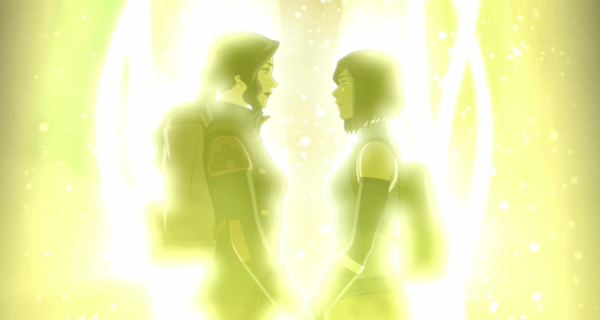
One of the first things I noticed about the show was how beautiful the soundtrack was, as well as how gorgeous some of the landscape animations were. I do not think enough fans appreciate how aesthetically pleasing of a show it is. The main setting, Republic City, alone satisfies my urban aesthetic needs.
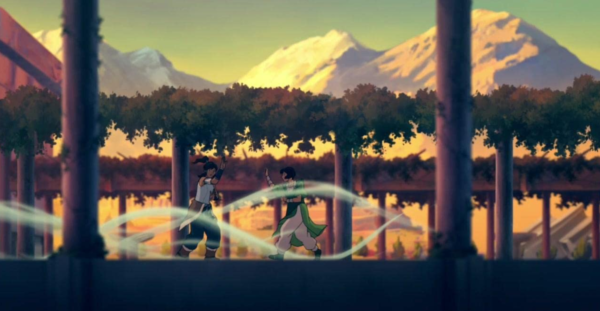 As an English major, I take a lot of interest in plot progression and character development. The first two seasons lack these, but the last two were fantastically executed to the best of their ability under budget cuts, studio pressures and previous script weaknesses. The third and fourth seasons chose bold storytelling measures and were able to see them through for organic suspense and emotional response. I was blown away by how invested I was in the grittiness of season three’s finale.
As an English major, I take a lot of interest in plot progression and character development. The first two seasons lack these, but the last two were fantastically executed to the best of their ability under budget cuts, studio pressures and previous script weaknesses. The third and fourth seasons chose bold storytelling measures and were able to see them through for organic suspense and emotional response. I was blown away by how invested I was in the grittiness of season three’s finale.
I have seen so many social media fan accounts hating on Korra as a character. People say she was a horrible Avatar. I am not disputing her faults; in fact, they are why I love her. Korra is a flawed hero and has commendable character development, even if it only begins in the show’s second half.
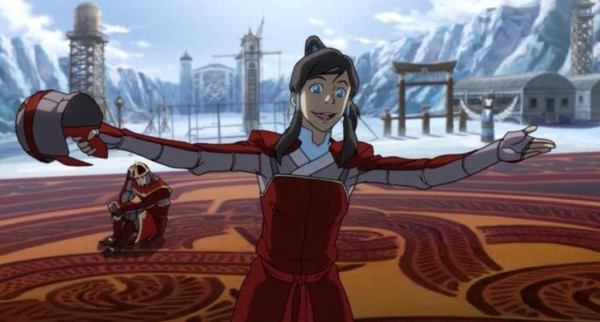 She starts off as irresponsible, her powers only heightening the impact of her immaturity. She is humbled by trauma and learns patience, wisdom and maturity. In the fourth season, I love how she struggled to regain her powers after Zaheer poisoned her and how Kuvira easily beat her in their first fight. These weaknesses made her human and kept her from being overpowerful.
She starts off as irresponsible, her powers only heightening the impact of her immaturity. She is humbled by trauma and learns patience, wisdom and maturity. In the fourth season, I love how she struggled to regain her powers after Zaheer poisoned her and how Kuvira easily beat her in their first fight. These weaknesses made her human and kept her from being overpowerful.
I was always entertained by her stubbornness, but I grew to love her so much more as she likewise grew. By the end, she showed how to return stronger from tragedy and how to respond to circumstances we can’t choose.
I think Korra was a great Avatar not because she was perfect, but because she had to work to gain the audience’s respect just as much as the citizens she was sworn to protect.
 Another thing that makes the show worthwhile is how it expanded the “Avatar” folklore. We were able to learn more about subforms of bendings previously seen in “Avatar: The Last Airbender,” such as bloodbending and metalbending, while learning about new ones like lavabending and spiritual projection. We also finally learned what the heck a lion-turtle spirit was and why it was so important in the finale of “Avatar.”
Another thing that makes the show worthwhile is how it expanded the “Avatar” folklore. We were able to learn more about subforms of bendings previously seen in “Avatar: The Last Airbender,” such as bloodbending and metalbending, while learning about new ones like lavabending and spiritual projection. We also finally learned what the heck a lion-turtle spirit was and why it was so important in the finale of “Avatar.”
I think “Korra” has a lot to praise, but I do realize it is not without its faults.
The first season felt like it was trying too hard to be a spin-off of “Avatar.” The shoved reference after reference down my throat.
 The first season’s finale was the epitome of poor writing and season two was a plot disaster. The villain felt unimposing. His lack of motive came across as lazy rather than suspenseful, which was fixed in the third season. I enjoyed learning how the first Avatar was born in the second season, but it felt out of place because important elements of the myth had not been mentioned prior. The love triangle between Makko, Korra and Asami in the first two seasons was only there when it needed to be and was more awkward than dramatic.
The first season’s finale was the epitome of poor writing and season two was a plot disaster. The villain felt unimposing. His lack of motive came across as lazy rather than suspenseful, which was fixed in the third season. I enjoyed learning how the first Avatar was born in the second season, but it felt out of place because important elements of the myth had not been mentioned prior. The love triangle between Makko, Korra and Asami in the first two seasons was only there when it needed to be and was more awkward than dramatic.
Season four’s villain was not set up at all, even though she was briefly introduced in the third season.
Even so, I do not think the show deserves the hate it receives.
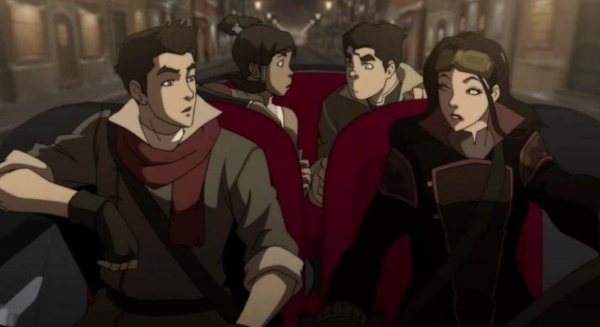 What people need to accept is “The Legend of Korra” is not “Avatar: The Last Airbender.” Yes, there are many similarities, but they are very different and are meant to be so. Throughout this article, I have tried my best to bring up “Avatar” as little as possible for this very reason. It is impossible to not compare them because of their shared universe, but it should not be as rigid as some fans think.
What people need to accept is “The Legend of Korra” is not “Avatar: The Last Airbender.” Yes, there are many similarities, but they are very different and are meant to be so. Throughout this article, I have tried my best to bring up “Avatar” as little as possible for this very reason. It is impossible to not compare them because of their shared universe, but it should not be as rigid as some fans think.
“Korra” was intended for an older audience, for the kids who had watched “Avatar” and were now growing up. Because of this, the show is more serious and relies less on humor. The characters are not as light-hearted, nor is its subject matter. The villain’s motives are more openly political, social and moral (I was especially impressed by Amon’s racial undertones.)
“The Legend of Korra” certainly deserves criticism, but that does not mean it’s not a good show. When I got to the last episode, I was genuinely upset I would not have any more to watch. The best way to view it is as its own piece of work, rather than constantly comparing it to “Avatar.”
[all photos courtesy of IMDb]
 Dara Lusk was born and raised in northern Virginia outside of Washington, DC. She is majoring in English with an emphasis in Technical/Professional Writing and a minor in Anthropology. When not writing she loves reading and annotating classic literature.
Dara Lusk was born and raised in northern Virginia outside of Washington, DC. She is majoring in English with an emphasis in Technical/Professional Writing and a minor in Anthropology. When not writing she loves reading and annotating classic literature.
@dara_marie_

